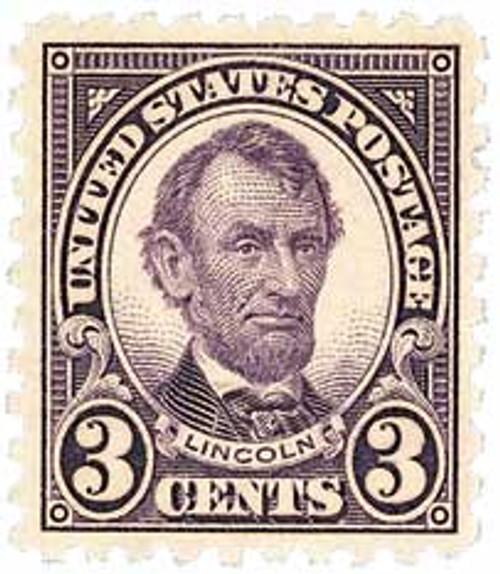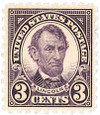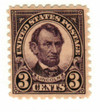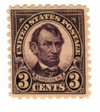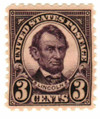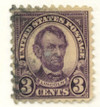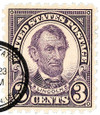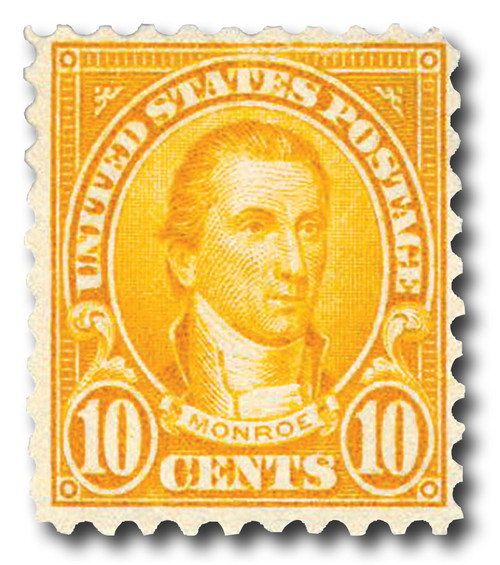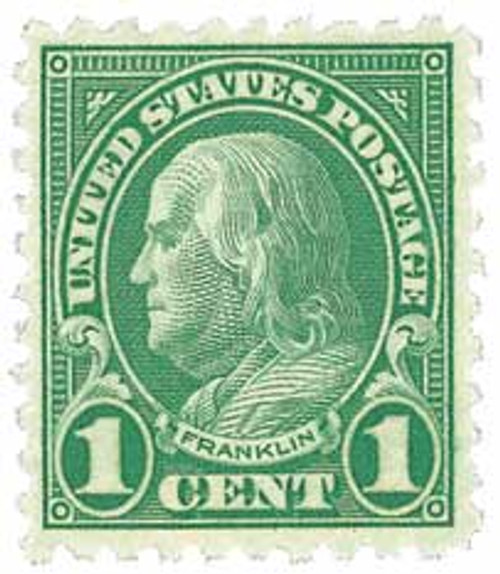
# 584 - 1925 3c Lincoln, violet
Series of 1923-26 3¢ Abraham Lincoln
First City: Washington, D.C.
Quantity Issued: 270,681,000
Printed by: Bureau of Engraving and Printing
Printing Method: Rotary Press
Perforation: 10
Color:Violet
First National Thanksgiving
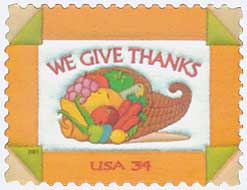
On December 18, 1777, the United States celebrated its first national Thanksgiving. The celebration was in reaction to the recent victory at the Battle of Saratoga.
Since the earliest settlement of the American colonies, there were days set aside for thanksgiving, prayer, and fasting in response to important events. These days of thanksgiving would be held on different days throughout the year and would vary between the colonies.
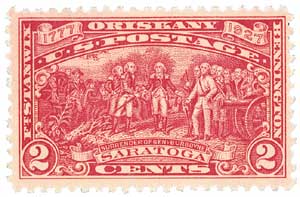
On October 7, 1777, the British General John Burgoyne led his army in the Second Battle of Freemans Farm. General Burgoynes defeat there was the conclusion of a series of empty victories in which British troops took ground, but suffered heavy losses. He decided to retreat, but soon found himself surrounded by the American army commanded by General Horatio Gates. On October 17, 1777, Burgoyne surrendered to Gates. The Americans took nearly 6,000 prisoners and a large supply of arms.
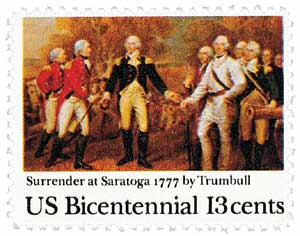
The British surrender at Saratoga (now Schuylerville), New York, marked a major turning point in the war. It showed that the British could be defeated and that their strategies were failing. This helped to convince France that it was possible to enter the war on the American side.
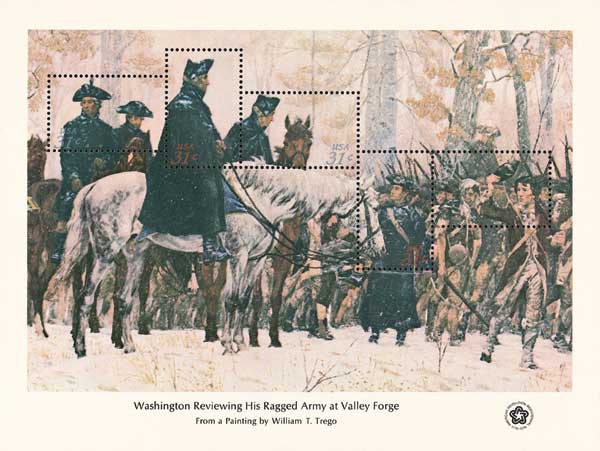
In response to this major victory, the Second Continental Congress issued a National Thanksgiving Day Proclamation on November 1. The proclamation announced that all Americans should celebrate that December 18 as a day of Thanksgiving. They recommended all people stop and give thanks to God for blessing America and their troops in their mission to achieve independence and their victories in the Revolutionary War.
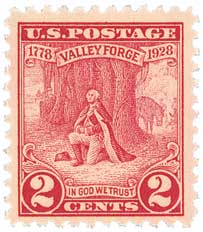
On December 18, 1777, General George Washington led his troops in observing the day of thanksgiving. They were nearly at Valley Forge, where they would spend the winter, but he chose to take the day off from marching so his men could give thanks. They spent the day encamped, preparing for Valley Forge, and attended a sermon. The men also received a special meal that included rice and roasted pig.
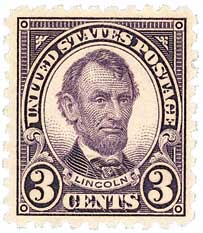
In the years to come, Congress would call for similar days of thanksgiving and in 1789, George Washington would be the first president to proclaim a Thanksgiving Day. In 1863, Abraham Lincoln proclaimed Thanksgiving Day as the final Thursday in November. And in 1941, Franklin Roosevelt signed legislation that declared Thanksgiving would be held on the fourth Thursday of November (most significant in the years where there are five Thursdays that month).
Series of 1923-26 3¢ Abraham Lincoln
First City: Washington, D.C.
Quantity Issued: 270,681,000
Printed by: Bureau of Engraving and Printing
Printing Method: Rotary Press
Perforation: 10
Color:Violet
First National Thanksgiving

On December 18, 1777, the United States celebrated its first national Thanksgiving. The celebration was in reaction to the recent victory at the Battle of Saratoga.
Since the earliest settlement of the American colonies, there were days set aside for thanksgiving, prayer, and fasting in response to important events. These days of thanksgiving would be held on different days throughout the year and would vary between the colonies.

On October 7, 1777, the British General John Burgoyne led his army in the Second Battle of Freemans Farm. General Burgoynes defeat there was the conclusion of a series of empty victories in which British troops took ground, but suffered heavy losses. He decided to retreat, but soon found himself surrounded by the American army commanded by General Horatio Gates. On October 17, 1777, Burgoyne surrendered to Gates. The Americans took nearly 6,000 prisoners and a large supply of arms.

The British surrender at Saratoga (now Schuylerville), New York, marked a major turning point in the war. It showed that the British could be defeated and that their strategies were failing. This helped to convince France that it was possible to enter the war on the American side.

In response to this major victory, the Second Continental Congress issued a National Thanksgiving Day Proclamation on November 1. The proclamation announced that all Americans should celebrate that December 18 as a day of Thanksgiving. They recommended all people stop and give thanks to God for blessing America and their troops in their mission to achieve independence and their victories in the Revolutionary War.

On December 18, 1777, General George Washington led his troops in observing the day of thanksgiving. They were nearly at Valley Forge, where they would spend the winter, but he chose to take the day off from marching so his men could give thanks. They spent the day encamped, preparing for Valley Forge, and attended a sermon. The men also received a special meal that included rice and roasted pig.

In the years to come, Congress would call for similar days of thanksgiving and in 1789, George Washington would be the first president to proclaim a Thanksgiving Day. In 1863, Abraham Lincoln proclaimed Thanksgiving Day as the final Thursday in November. And in 1941, Franklin Roosevelt signed legislation that declared Thanksgiving would be held on the fourth Thursday of November (most significant in the years where there are five Thursdays that month).

